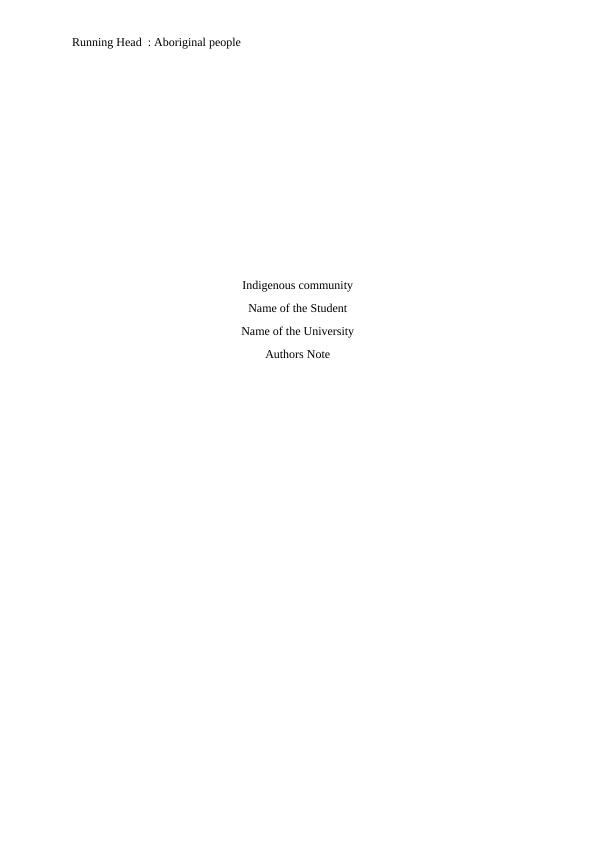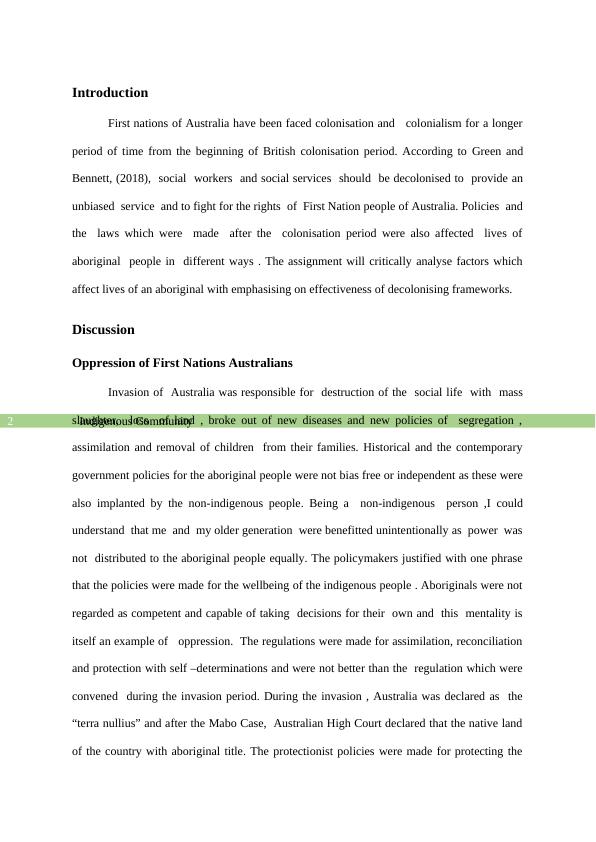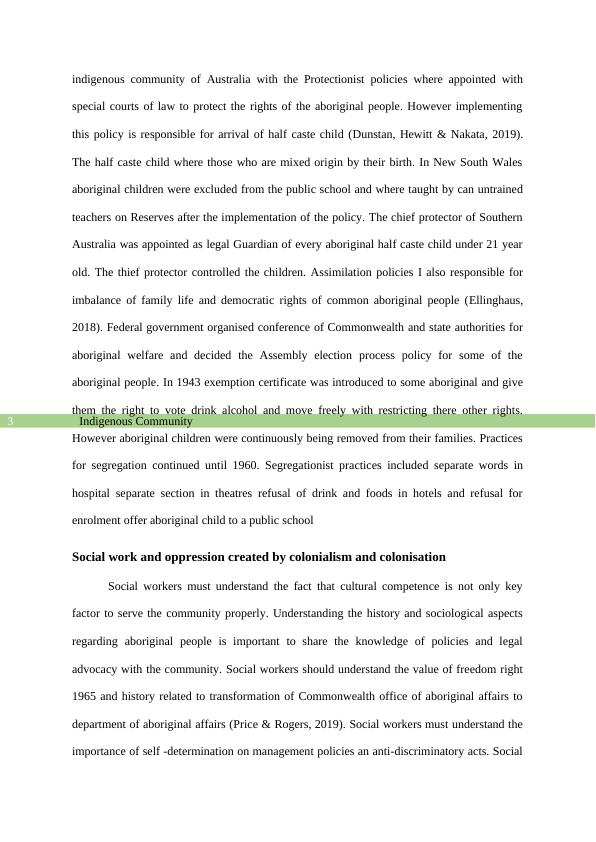Indigenous Community - Oppression of First Nations Australians
Write an essay on decolonization in social work, focusing on the need for social workers and the profession to undergo a journey of self-discovery and decolonization. Discuss the impact of colonialism on Aboriginal communities and the responsibility of social workers to acknowledge their own positioning and privileges in relation to Aboriginal people.
Added on 2022-08-22
Indigenous Community - Oppression of First Nations Australians
Write an essay on decolonization in social work, focusing on the need for social workers and the profession to undergo a journey of self-discovery and decolonization. Discuss the impact of colonialism on Aboriginal communities and the responsibility of social workers to acknowledge their own positioning and privileges in relation to Aboriginal people.
Added on 2022-08-22
End of preview
Want to access all the pages? Upload your documents or become a member.



